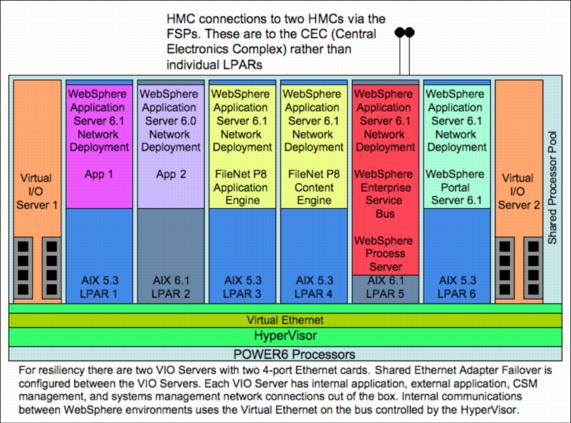|
5.5.7 WebSphere Application Server ND versus WebSphere Application Server XD on System pAlthough the core of an enterprise level OLTP environment is produced by WebSphere Application Server ND, there are benefits to using WebSphere Application Server XD and its intelligent router feature. WebSphere Application Server XD can identify a requirement for more resources to support a configured application load according to a set of predefined rules. WebSphere Application Server XD will try to find an environment that can host a newly created WebSphere Application Server instance to help support the load, which may require shutting down lower priority applications or instances. Note that there is a difference in the paradigms underlying these products. WebSphere Application Server XD aims to move the load to the available resources. In contrast, the System p HyperVisor aims to move the available resources to the load, so if a partition is overloaded running a WebSphere Application Server instance and another partition has less load and resources available within the same physical machine, the HyperVisor can attempt to take physical CPU cycles away from the given partition and get it to cede those cycles to the WebSphere Application Server instance if capping does not come into play. In the meantime, WebSphere Application Server XD may be trying to create another WebSphere Application Server instance, possibly in the less-utilized partition, to reduce the load. Both approaches are valid, but it is important to configure rules and thresholds to ensure that conflicts do not occur. Future WebSphere Application Server XD implementations may make use of more HyperVisor statistics using the appropriate APIs; see Figure 5-26.
Figure 5-26 Future WebSphere Application Server platform configuration scenario WebSphere Application Server 6.1 uses an Eclipse 3.1.2 platform as its base to provide the OSGI platform functionality for dynamic component management. It is likely that WebSphere Application Server 7 will use Eclipse 3.3 as its base, or possibly Eclipse 3.4, and continue the move to a more modular component-based runtime where components that provide WebSphere Application Server features are loaded dynamically when required. Eclipse 3.3 has its own HTTP listener and JMX implementation, so it is likely that WebSphere Application Server will move to using these rather than its own implementation and the open source tmx4j implementation, respectively. To summarize, the key to an understanding the direction of WebSphere Application Server and many IBM products is to understand the OSGI architecture and how it improves dynamic extensibility and reduces memory consumption by only loading required components.
|
